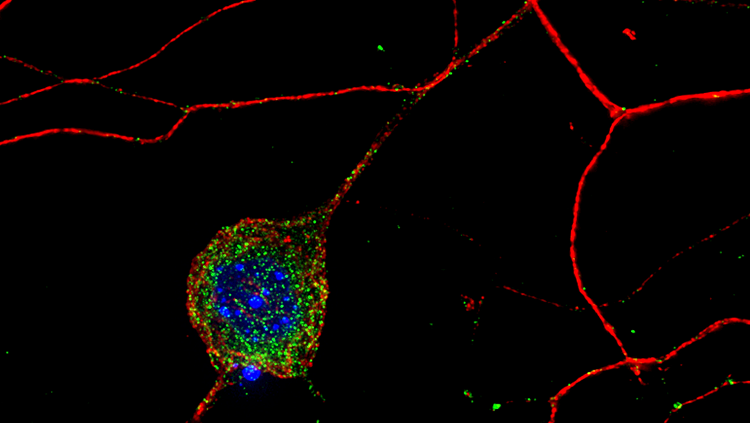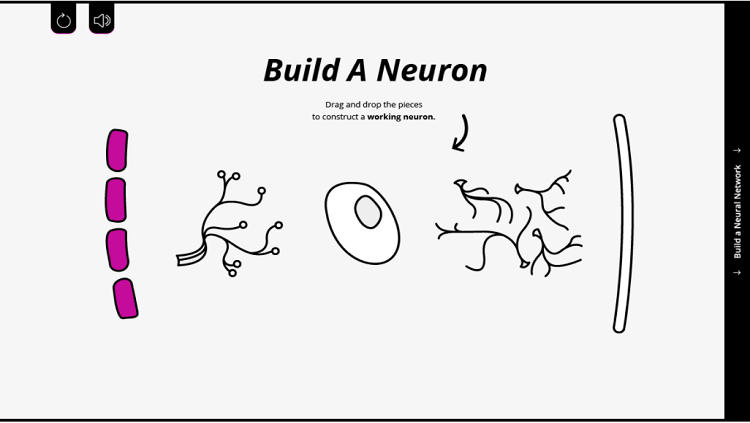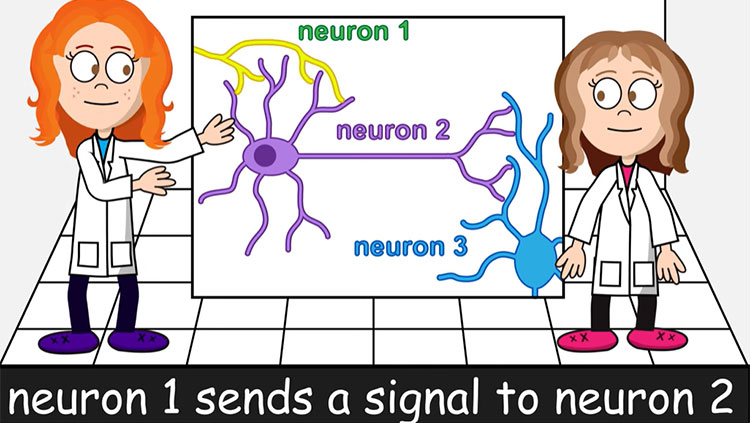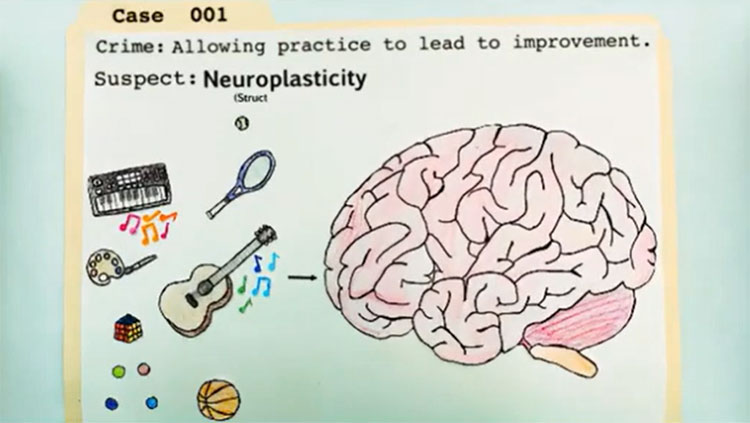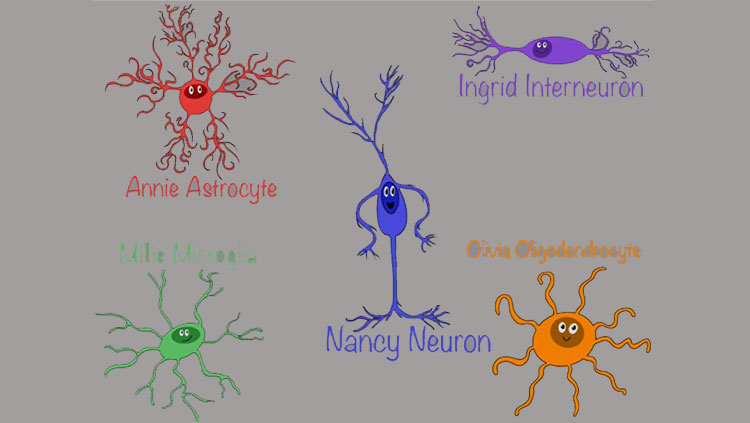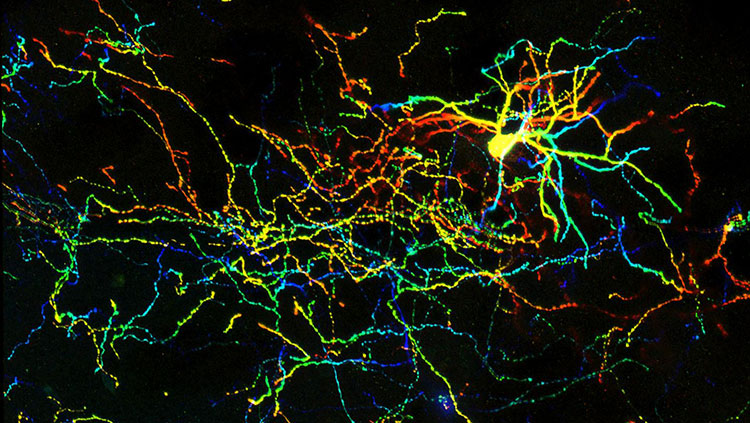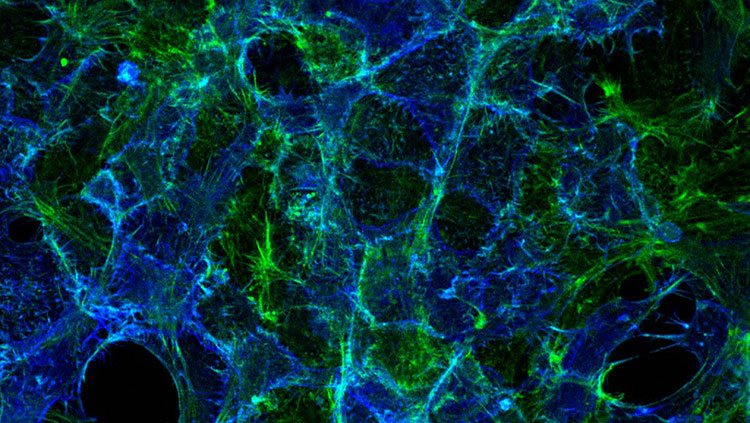Messengers of Fire and Ice
- Published6 Nov 2019
- Author Charlie Wood
- Source BrainFacts/SfN
Bundles of dorsal root ganglion cells — seen here in a mouse — live near the peripheral nervous system outside our spines, where they relay messages telling us how the torso is doing. If the room is too cold, maybe we need to put on a sweater. If we’re touching a hot stove, we need to get our hand away ASAP.
In their quest to figure out what form the information takes neuroscientists have identified many different types of dorsal root ganglion cells. Some respond mainly to temperature while others respond to pressure, but at least half correspond to more than one type of feeling.
Recently, researchers have learned that the cells record different sensations in different ways. The hotter it gets, for instance, the more heat cells fire. As it gets colder, however, the overall number of cold cells firing stays about the same. Rather, the cold information seems to lie in which cold cells fire, rather than how many.
CONTENTPROVIDEDBY
BrainFacts/SfN
References
Wang, F., Bélanger, E., Côté, S. L., Desrosiers, P., Prescott, S. A., Côté, D. C., & De Koninck, Y. (2018). Sensory Afferents Use Different Coding Strategies for Heat and Cold. Cell Reports, 23(7), 2001–2013. doi: 10.1016/j.celrep.2018.04.065
Wood, J. N., Emery, E. C., & Ernfors, P. (2018). Dorsal Root Ganglion Neuron Types and Their Functional Specialization. The Oxford Handbook of the Neurobiology of Pain. Retrieved from https://www.oxfordhandbooks.com/view/10.1093/oxfordhb/9780190860509.001.0001/oxfordhb-9780190860509-e-4


